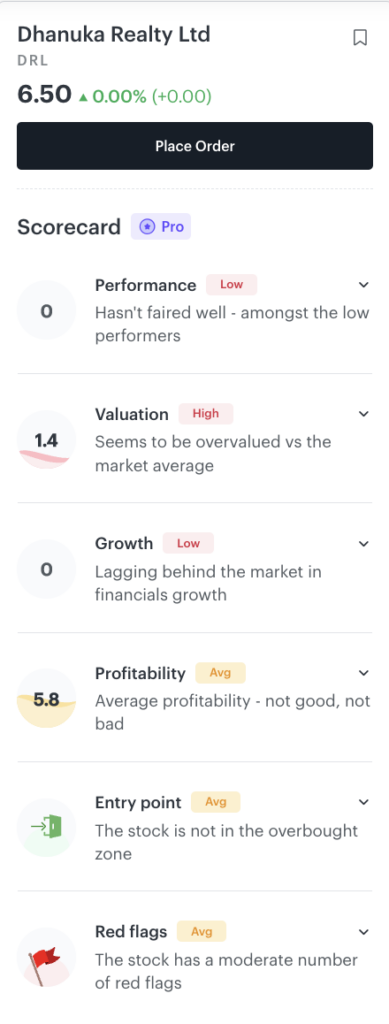EBITDA (Earnings before Interest, Taxes, Depreciation and Amortisation) defines the company’s total earnings for a particular duration before tax and other relevant deductions come into the picture.
EBITDA is a widely used metric to indicate a company’s operating performance. It can be calculated quarterly or annually. To know more about EBITDA, read on.
You will Learn About:
EBITDA meaning – What is EBITDA?
EBITDA is an acronym for Earnings before Interest, Taxes, Depreciation and Amortisation. The metric is used to evaluate the operating performance of the company. EBITDA denotes the company’s operating income where a few non-cash expenses are not included.
Once you reduce the interest, taxes, depreciation, and amortisation components from EBITDA, you get the company’s net income. The net income is considered the actual profits that a company earns.
The primary objective of EBITDA is to showcase a company’s financial performance before considering the impact of the various components like taxes, interest etc. (the companies make these deductions later). However, the deductions are made based on how debt cost, taxes etc., are calculated.
EBITDA: What You Need to Know!
- EBITDA is a widely used measure to understand the profitability of a company
- Using EBITDA, you can calculate the gross earnings of the company. The gross earnings represent the company’s profit before the capital costs are removed
- All companies report EBITDA and net profit to accurately represent their gross earnings and true profits
EBITDA formula
The EBITDA calculation is relatively easy. If you have determined a company’s net income, you can calculate its EBITDA. The EBITDA formula is:
EBITDA = Net Income + Interest + Taxes + Depreciation + Amortisation
Or
EBITDA = Operating Profit + Depreciation + Amortisation
Components of EBITDA
EBITDA is made up of different components. Here’s a breakdown of all the components:
- Earnings
Earnings refer to the total revenue earned by a company. However, EBIDTA deals only with the operating income. Operating income refers to a company’s income after deducting all operating costs.
The operating earnings are the starting point for EBITDA calculation. It helps companies analyse the impact of operating expenses on their income.
- Interest
Interest refers to the cost that a company bears on its debt borrowings. The interest expense will depend on the amount a company has borrowed to run its business.
Depending on the company’s capital structure, different companies have different interest expenses. Interest expenses are deducted from the EBITDA to calculate the actual profit.
- Taxes
Taxes, which are legal obligations, impact a company’s operating income. The component of taxes is not removed when calculating EBITDA. In other words, EBITDA includes the amount that will later be deducted as taxes.
The government decides the amount of tax that a company needs to pay. Hence, tax payments affect profitability. EBITDA aims to showcase the company’s actual profits before the taxes are deducted.
- Depreciation
Depreciation refers to a decline in the value of an asset due to factors like ageing, regular wear and tear, a fall in the market value, etc. EBITDA shows the profit before the depreciation cost is factored in.
- Amortisation
Amortisation expenses come into the picture if the company owns certain intangible assets. Intangible assets include patents, goodwill etc., and their value falls over time. This is not accounted for when calculating EBITDA.
Note: Amortisation does not affect the company’s operating income in a literal sense.
Why use EBITDA?
EBITDA is a good measure to understand a company’s operating or gross profits. It gives a fair idea of the cash flow that a company has. You can also consider the EBITDA of different companies to compare their performance.
EBITDA is also a great way to understand how much a company pays out in terms of interest or taxes. For example, if the company has high borrowing costs, it could lower the EBITDA value, which investors may consider a red flag. In reality, several investors use multiples of EBITDA to ascertain the company’s worth.
EBITDA is an important metric that, along with others, can help you identify a fraudulent company. Read how to do Forensic Checks to identify fraudulent companies and stay away from making investment decisions that can cost you.
Did you know that there are various redflags that suggest a stock can be highly risky? If you knew that a stock has potential redflags, you can ascertain the severity of the risk and choose not to invest in it. This way, you can avoid mishaps in your investing journey.
To help you do this, Tickertape shows whether a stock has redflags across three categories – ASM and GSM list, stocks with high promoter pledged holdings, and a high probability of default. You can find these on the Scorecard for every stock. Here’s how it looks:

These are key redflags that you should not miss checking on. So check if stocks in your portfolio have any potential dangers. In case you have multiple stocks in your portfolio, you need not do this check for individual scrips.
Simply head to your Portfolio on Tickertape and scroll down to the Redflags section.

Try out this feature to do a comprehensive analysis of your portfolio and make better selling decisions.
Limitations of EBITDA
While EBITDA is a good measure of understanding the company’s profitability, it is not accepted as a profitability metric by several accounting standards like GAAP and IFRS.
EBITDA shows a scenario where the company has still not paid its interest or taxes. But, in reality, when running a company, you need to bear these expenses, which significantly impact the profits.
Also, EBITDA does not include the assets’ loss of value.
How to increase EBITDA?
There are different ways in which you can improve the EBITDA of a company. Some of these ways are:
- Cost reduction
The best way to improve your EBITDA is to reduce expenses. This can be done by avoiding unnecessary expenses. For instance, debt costs could be reduced to boost EBITDA.
- Focus on price stability
Try to maintain fair pricing and avoid any discounting, as it can significantly impact your operating profits. Companies can try to achieve production efficiencies while reducing their cost of manufacturing.
- Increase revenues
Revenues have a direct impact on the EBITDA of the company. It can try improving the revenue by targeting a larger market or selling more products.
- Select your vendors carefully
Vendors greatly impact the EBITDA margins. Try to look for vendors where you can cut down on your supply costs and have better contract negotiations.
- Improve inventory management
A poorly managed inventory can negatively impact EBITDA. It is ideal for optimising production and having better inventory management.
Conclusion
EBITDA plays a pivotal role in analysing the company’s financial position. It shows the company’s operating income which it earns by engaging in regular business activities. Several companies consider it an essential parameter for defining their financial health.
Understanding the concept of EBITDA is vital as investors use it widely to assess a company’s financial performance.



